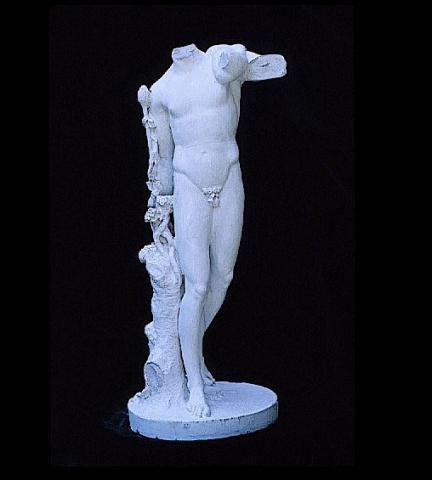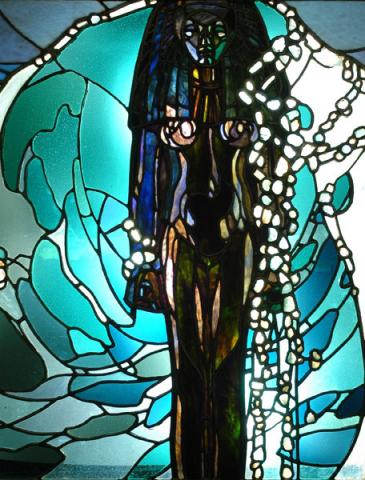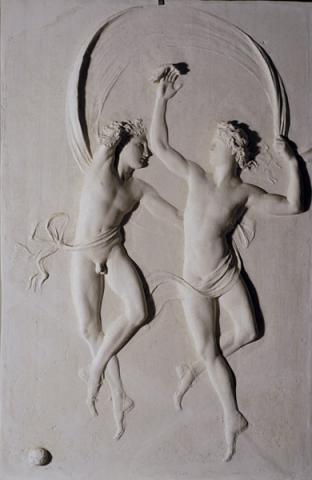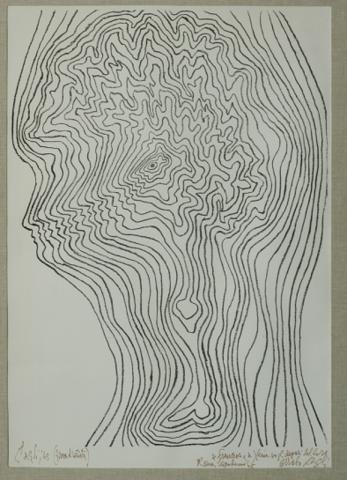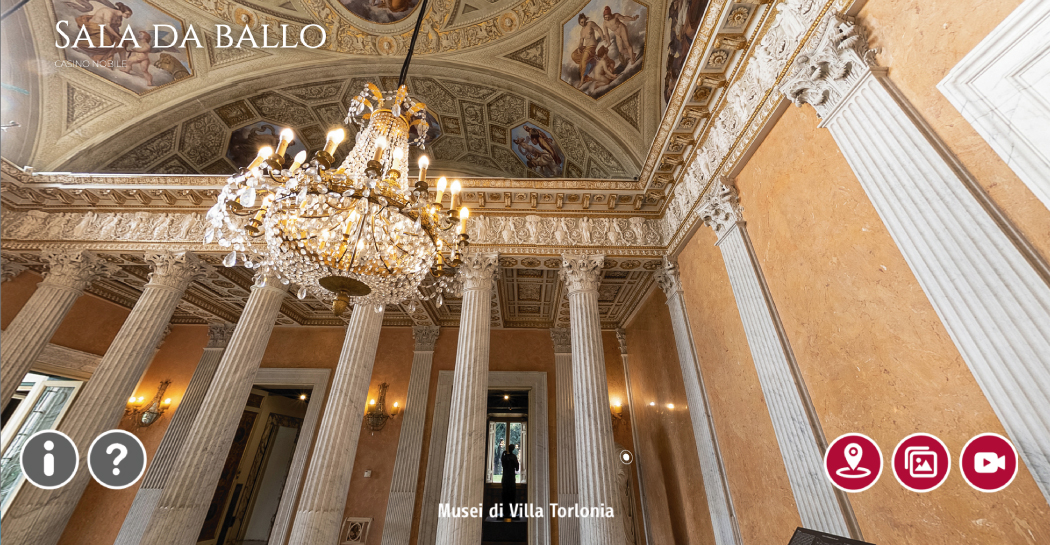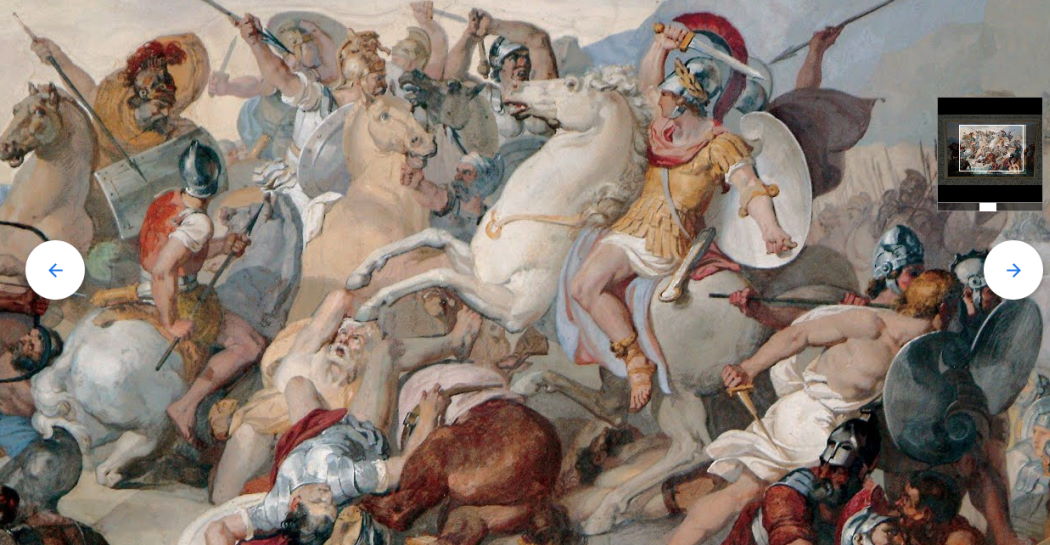The Artwork of the Month of the Museo della Scuola Romana - May 2022
June 2022
Corrado Cagli
(Ancona, 1910 - Rome, 1976)
Adamo, 1965
Lithograph and marker on paper, 707x516 mm
MSRo92
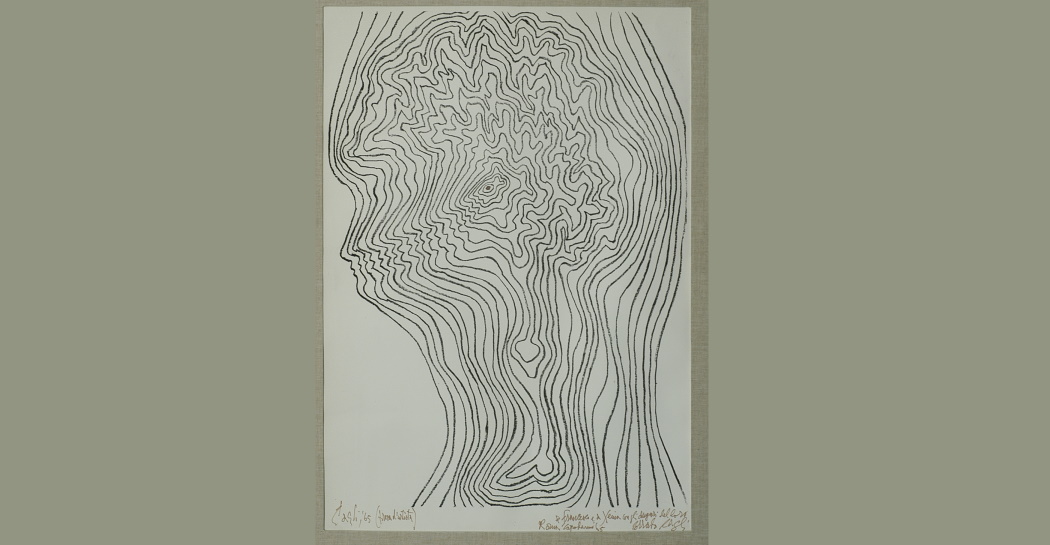
"No one knows anything about the psyche except the perimeter of an impenetrable labyrinth where, nevertheless, associative processes probe and draw, from an unlimited congeries, arguments, words, forms, sensations, in order to communicate and express. No one more than the moderns has investigated the thickness of those sediments that conceal, in scattered seeds, the memory of human history...".
With these words Corrado Cagli sheds light on works in which, as in this authorial proof for Adam, he attempts to probe the depths of the human soul by means of a peculiar linear motif reminiscent of isometric or isobaric curves. In the graphic labyrinth of concentric perimeters with which Cagli depicts the profile of the first man, the unfathomability of the human psyche is expressed.
This artist's proof, personalised by the artist with a marker intervention in the central section of the work, closely resembles an earlier ink drawing on rice paper with the same title, dated 1962. This is how Giuseppe Ungaretti interprets the infinite multiplication of Adam's profile in Cagli's work: "These are concentric signs that start from the pith of the tree, and of the tree they indicate the number of years. At the end [...] the years delineate like a face of a human person that multiplies. [...] Is it the punishment after the expulsion from Eden, which will consist in the only chance to overcome death in the passing of the centuries, multiplying generations?".
A graphic sign similar to the one that characterises this author's proof, as well as the entire lithographic series 'Adam', can be found in a large group of graphic works that Cagli worked on from 1959 to the mid-1970s, and plays a prominent role in particular in the silkscreens with mythological subjects in which, in a manner quite similar to that of 'Adam', he depicts some of the main classical deities. In these, the artist combines the independence of the sign with its rootedness in a research that from the very beginning tends towards a dimension of rediscovery and revisitation of the mythical origins of humanity.
A keen scholar of Jung, in 1964 Cagli re-worked the same linear motif in a cycle of drawings dedicated to Erasmus' Praise of Madness.
As can be seen from the dedication "To Francesco and Xenia with the best wishes of their / Corrado Cagli / Rome, New Year's Eve 65", this authorial proof was given by the artist to Francesco Ingrao and Ksenija Guina, to whom he was bound by a friendship. The work became part of the collection of the Museo della Scuola Romana in 2011, thanks to a donation from the heirs of the Ingrao couple.
Corrado Cagli was born in Ancona on 23 February 1910. In 1915, he moved with his parents to Rome, where he completed his classical studies before enrolling at the Academy of Fine Arts. While still very young, he devoted himself to mural painting with great enthusiasm, also in terms of theoretical elaboration, as his article Muri ai pittori, published in 1933, attests. In 1932, his first solo exhibition was held at the Galleria d'Arte in Rome, and in the same year, the 'Gruppo dei nuovi pittori romani' (Group of New Roman Painters) was founded, formed by Cagli, Giuseppe Capogrossi and Emanuele Cavalli, artists who were united by the tonal imprint of their painting. Born into a Jewish family, in 1938, anti-Semitic attacks and accusations of degenerate art against him intensified and so in November, faced with the threat of racial persecution, he took refuge in Paris and then in New York, where he obtained US citizenship and, in 1941, enlisted as a private soldier: he was among the first in the US army to enter the Buchenwald camp. In 1948 he settled in Rome again, and it was here in the 1950s that he approached primitive African and Oriental art, through which he was able to rework the theme of origins and 'primordialism', central to his early artistic production. In 1964, the Venice Biennale dedicated a personal room to him. He died in Rome on 28 March 1976.
Back to the section > The Artwork of the Month of the Museo della Scuola Romana


























